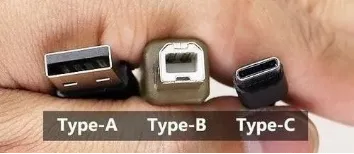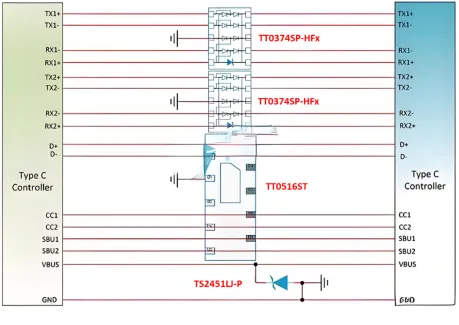The USB Type-C connector—also known as USB-C—is the newest USB form factor. Compared to legacy Type-A and Type-B connectors, its volume is only about one-third, making it the smallest in the Type family.

It first appeared on the Nokia N1 tablet in 2014, was adopted by Google’s Chromebook Pixel in 2015, and later gained widespread recognition when Apple equipped its ultra-slim MacBook with this connector. Since then, it has spread to countless other products.

As shown in the integrated Type-C port ESD protection schematic, two high-speed differential pairs (TX and RX, four lanes in total) are protected by two TT0374SP-HFx chips. Each device integrates four TVS cells, significantly shrinking the PCB footprint. The straight-through layout keeps traces short, preserving signal integrity and speed.
For the USB 2.0 D+/D– pair and for the CC/SBU lines used for Power Delivery (PD) detection and protocol control, JY Electronics recommends the 6-channel ESD diode TT0516ST. Its compact array further reduces board space and utilizes the same straight-line routing to minimize bends and maintain signal quality.
VBUS power-line protection is handled by the TS2451LJ-P ESD diode. With a 24 V working voltage, 0.5 µA leakage, and a peak-pulse current rating of 200 A, it is ideal for USB-PD fast-charging applications.

Application Circuit Diagram: Type-C Integrated ESD Protection Solution